Abundance: common
What: leaves, fruits, roots
How: leaves tea, cooked; roots medicinal
Where: disturbed areas, wet, borders, sunny, shade, fields
When: winter, spring, summer
Nutritional Value: calories, protein,
Dangers: Leaves and roots contain ephedrine. Roots also contain soap-like saponins.
Medicinal Summary:
Root/Seeds - contain ephedrine - stimulant; decongestant; raises blood pressure; appetite suppression (tincture, tisane)
Wireweed aka sida plant in construction site.

Close-up of leaves, ripe fruit, and seeds.
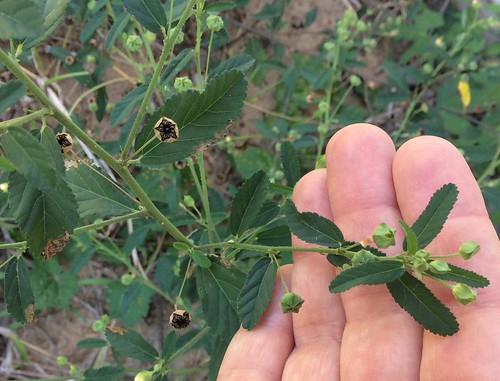
Wireweeds left alone turn into sparse bushes.
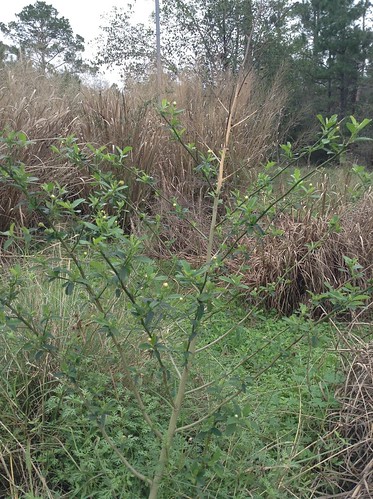
They can grow in temporary wet areas. Note the diamond-shaped mature leaves closer to the stem and more elongated, younger leaves near the ends of the branches.
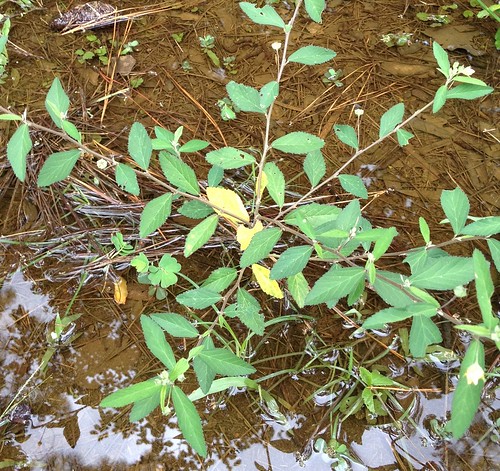
Close-up of leaves and flower buds.
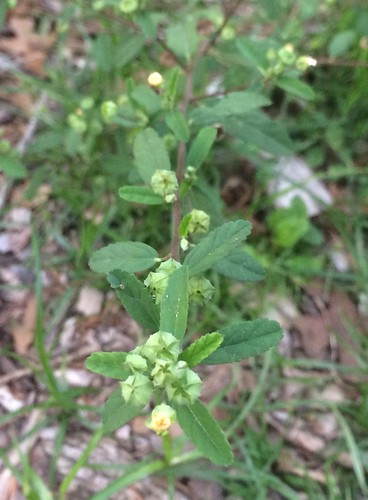
Close-up of nearly opened flower, fruit, and toothed leaves.
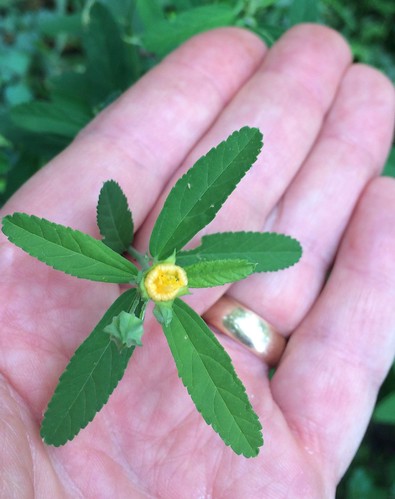
Close-up of opened, five-petaled blossom. Note how the petal bases overlap.
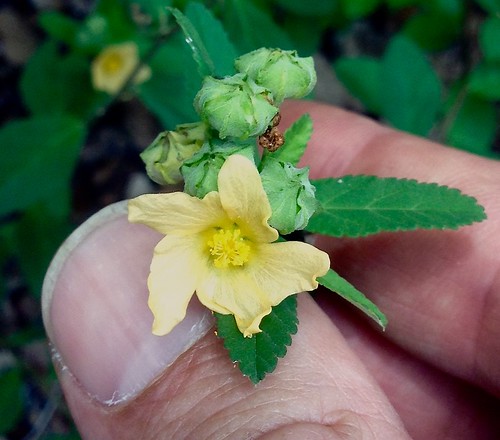
Texas distribution, attributed to U. S. Department of Agriculture. The marked counties are guidelines only. Plants may appear in other counties, especially if used in landscaping.
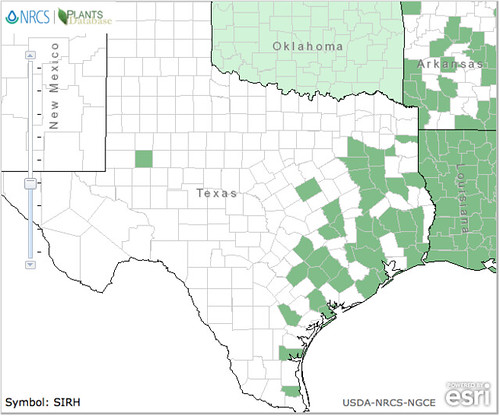
North American distribution, attributed to U. S. Department of Agriculture.
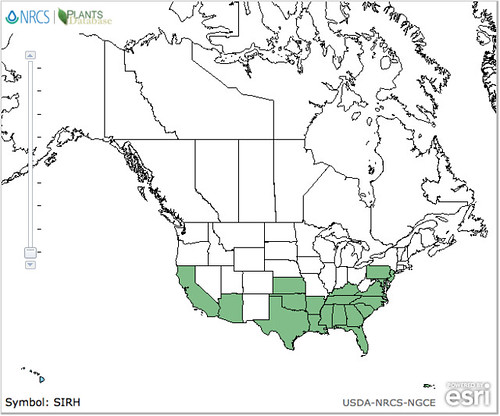
Stroll past any disturbed area, especially one that's a bit damp, and you are almost guaranteed to come across lots of this wiry, weedy, sparsely-leafed, yellow flowered plant called wireweed. It seems to love the edges of parking lots, underpasses, and anywhere else the soil is abused and unloved by humans. It first shows up in late spring, carries on through the summer's heat, and lasts into fall until the real "cold" weather hits. Wireweed can survive mild winters, leading it to become perennial. These leggy weeds usually seem to get about two feet tall but if it does survive the winter it can double that height.
The stem is tough, round, and green to brownish. The somewhat elongated or diamond-shaped leaves are toothed, with a pinnate vein pattern, lightly hairy on top and more hairy on the undersides. The leaves themselves grow in an alternating pattern. The yellow flowers have five petals which overlap at their bases and yellow stamen in the center. After the flowers is done a green "button" style of fruit appears which eventually turns dry and brown. Flowers seem to close up during the night and usually open at mid-day though some may open sooner and others later. Wireweed grows a thickish taproot with many side roots coming off it.
The leaves of wireweed are about 7% protein along with a high concentration of carbohydrates but this plant's main claim to fame is both the leaves and roots contain high levels of ephedrine. This medicinal compound is usually accessed by making tea from the leaves and root or smoking the leaves. Please note, ephedrine can cause issues with lungs and heart especially if you already have high blood pressure, other heart issues, diabetes, enlarged prostrate, or thyroid problems. Ephedrine can also interfere with the performance of monoamine oxidase inhibitor (MAOI) antidepressant medications.
Side rhombifolia leaves are eaten as a vegetable in Australia. The tender, young seed pods are mild in flavor but their ephedrine concentration is unknown so use some care if you decide to eat them. The stems of S. rhombifolia contain mucilage but because of it's innate toughness I don't recommend using the chopped-up stem as a thickener. The strength of these stems and roots are what gives it the name "wireweed" and is why it has a long history of being used to weave baskets and otherwise be used as cordage in the wild. The stems and branches were also used to make brooms.
Buy my book! Outdoor Adventure Guides Foraging covers 70 of North America's tastiest and easy to find wild edibles shown with the same big pictures as here on the Foraging Texas website.

